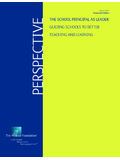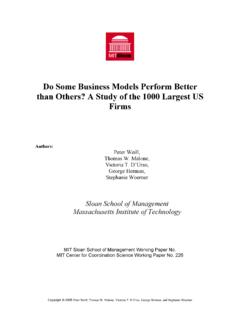Transcription of Common COVID-19 Citations: Helping Employers Better ...
1 Common COVID-19 Citations: Helping Employers Better Protect Workers and Comply with OSHA Regulations This document is intended to help Employers understand which OSHA standards have been cited most frequently during COVID-19 related inspections. This data is based on inspections where citations have been issued. OSHA initiated these inspections following complaints, referrals, or fatalities in industries such as: hospitals and healthcare, nursing homes and long term care settings, and meat/poultry processing facilities. By understanding which workplace hazards have most often resulted in OSHA citations, Employers can Better ensure that they are adequately protecting workers.
2 (Note: the standards and requirements are listed in order of the frequency by which they are cited when this document was issued.) Federal OSHA Standard Cited Violation Description Available Resources and Related Information - Respiratory Protection Section (e) - Medical Evaluation Safety and Health Topics Respiratory protection Understanding Compliance with OSHA's Respiratory Protection Standard During the Coronavirus Disease 2019 ( COVID-19 ) Pandemic. (August 2020). Seven Steps to Correctly Wear a Respirator at Work. OSHA Poster, (May 2020). OSHA Respiratory Projection Training Videos (most available in Spanish) o Putting on and Taking off a Mask.
3 O Respiratory Protection for Healthcare Workers. (e)(1) The employer did not provide a medical evaluation before the worker was fit-tested or used the respirator. (e)(2)(ii) The medical evaluation was missing information required in mandatory Appendix C (OSHA Respirator Medical Evaluation Questionnaire) of the standard. Section (f) - Fit Testing (f)(1) The employer did not perform an appropriate fit test for a tight-fitting facepiece respirator. Page 2 of 6 Federal OSHA Standard Cited Violation Description Available Resources and Related Information (f)(2) The employer did not ensure that an employee was fit tested prior to using the respirator the first time, whenever a different respirator facepiece was used (size, style, model or make), and annually thereafter.
4 O The Difference Between Respirators and Surgical Masks. o Respirator Safety. Donning (Putting on) and Doffing (Taking off) and User Seal Checks. o Respirator Fit Testing o Medical Evaluations o Training Requirements o Voluntary Use of Respirators NIOSH/OSHA/CDC Toolkit. Hospital Respiratory Protection Program Toolkit: Resources for Respirator Program Administrators (EPUB | MOBI). (2015). Respirator Medical Evaluation Questionnaire Infosheet. OSHA Publication 3789, (May 2015). Small Entity Compliance Guide for the Respiratory Protection Standard. (2011). General Respiratory Protection Guidance for Employers and Workers. OSHA Bulletin, (2011). Respirators.
5 OSHA QuickCard, (2005). Also available in Spanish Assigned Protection Factors for the Revised Respiratory Protection Standard. OSHA Guidebook, (2009). Respiratory Infection Control: The Difference Between Respirators and Surgical Masks. OSHA Fact Sheet, (2009). Respiratory Protection. OSHA eTool. Preparing Solutions for Qualitative Fit Testing from Available Chemicals. (June 16, 2020) Respiratory Protection Guidance for the Employers of Those Working in Nursing Homes, Assisted Living, and Other Long-Term Care Facilities During the COVID-19 Pandemic. (October30, 2020) (f)(5) The employer did not administer a fit test using a protocol in Appendix A (Fit Testing Procedures) of the standard.
6 Section (c) - Respiratory protection program (c)(1) (c)(1)(ix) (c)(1)(iii) (c)(1)(ii) The employer did not establish, implement, or update a written respiratory protection program with worksite-specific procedures. The employer did not include specific provisions in their respiratory protection program, including procedures for: medical evaluations; fit-testing; and regularly evaluating the effectiveness of the program. (c)(2)(i) The employer determined that voluntary respirator use was permissible but did not provide the respirator users with the mandatory information from Appendix D (Information for Employees Using Respirators When not Required Under Standard).
7 (c)(3) The employer did not designate a qualified program administrator to administer or oversee the respiratory protection program and conduct the required evaluations of program effectiveness. Section (k) - Training and information (k) The employer did not provide effective training, and basic information as described in Appendix D (Information for Employees Using Respirators When not Required Under Standard). The training must be comprehensive, understandable, and recur annually, and more often if necessary. (k)(1) (k)(1)(i) (k)(1)(vi) (k)(1)(iv) The employer did not ensure that each employee could demonstrate knowledge of: Why the respirator is necessary; How improper fit, usage, or maintenance can reduce protection; The limitations and capabilities of the respirator; How to use the respirator effectively in emergency situations; Page 3 of 6 Federal OSHA Standard Cited Violation Description Available Resources and Related Information How to inspect, put on and remove, use, and check the respirator seal; Procedures for maintenance and storage; How to recognize medical signs and symptoms that may limit or prevent respirator use.
8 And The general requirements of this section. Enforcement Guidance for Respiratory Protection and the N95 Shortage Due to the 2019 Novel Coronavirus Disease ( COVID-19 ) Pandemic. (April 3, 2020) Healthcare Respiratory Protection Annual Fit-Testing for N95 Filtering Facepieces During the COVID-19 Outbreak. (March 14, 2020) Enforcement Guidance for Use of Respiratory Protection Equipment Certified Under Standards of Other Countries or Jurisdictions During the Coronavirus Disease 2019 ( COVID-19 ) Pandemic. (April 3, 2020) Expanded Temporary Enforcement Guidance on Respiratory Protection Fit-Testing for N95 Filtering Facepieces in All Industries During the Coronavirus Disease ( COVID-19 ) Pandemic.
9 (April 8, 2020) Enforcement Guidance on Decontamination of Filtering Facepiece Respirators in Healthcare During the Coronavirus Disease 2019 ( COVID-19 ) Pandemic. (April 24, 2020) Temporary Enforcement Guidance - Tight-Fitting Powered Air Purifying Respirators (PAPRs) Used During the Coronavirus Disease 2019 ( COVID-19 ) Pandemic. (October 2, 2020) (k)(3) The employer did not provide training before the employee used a respirator in the workplace. (k)(5)(i) The employer did not retrain employees about changes in the workplace or the type of respirator when previous training was obsolete. (k)(6) The employer allowed voluntary use of respirators but did not provide the required information on voluntary use of respirators in mandatory Appendix D (Information for Employees Using Respirators When not Required Under Standard).
10 Section (d) - General requirements (d)(1)(ii) The employer did not select a NIOSH-certified respirator. (d)(1)(i) The employer did not select and provide an appropriate respirator based on the respiratory hazard(s) to which the worker is exposed. Section (a) - Permissible practice (a)(2) The employer did not provide an appropriate respirator to each employee when necessary to protect the health of the employee. Section (m) - Medical evaluation (m)(2) (m)(2)(i) The employer did not establish adequate fit test records, including: the name or identification of the employee tested; the type of fit test performed; the specific make, model, style, and size of respirator tested; the date of test; and the pass/fail results for qualitative fit tests the fit factor and strip chart recording or other recording of the test results for quantitative fit tests.













